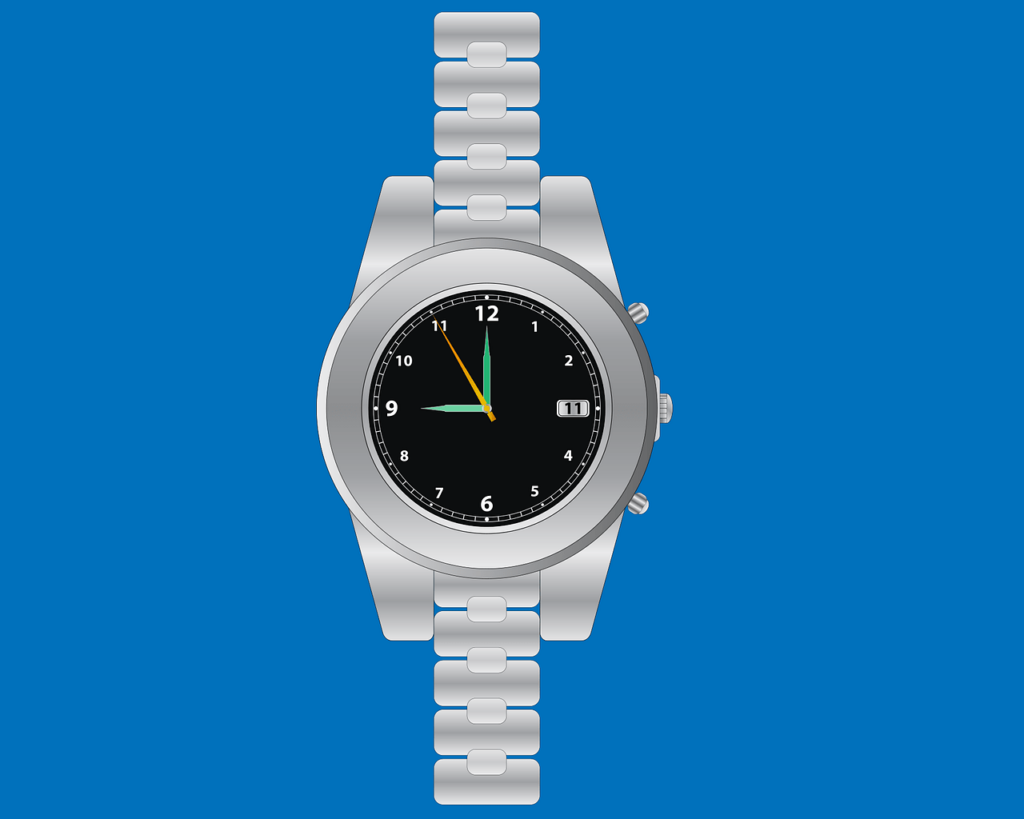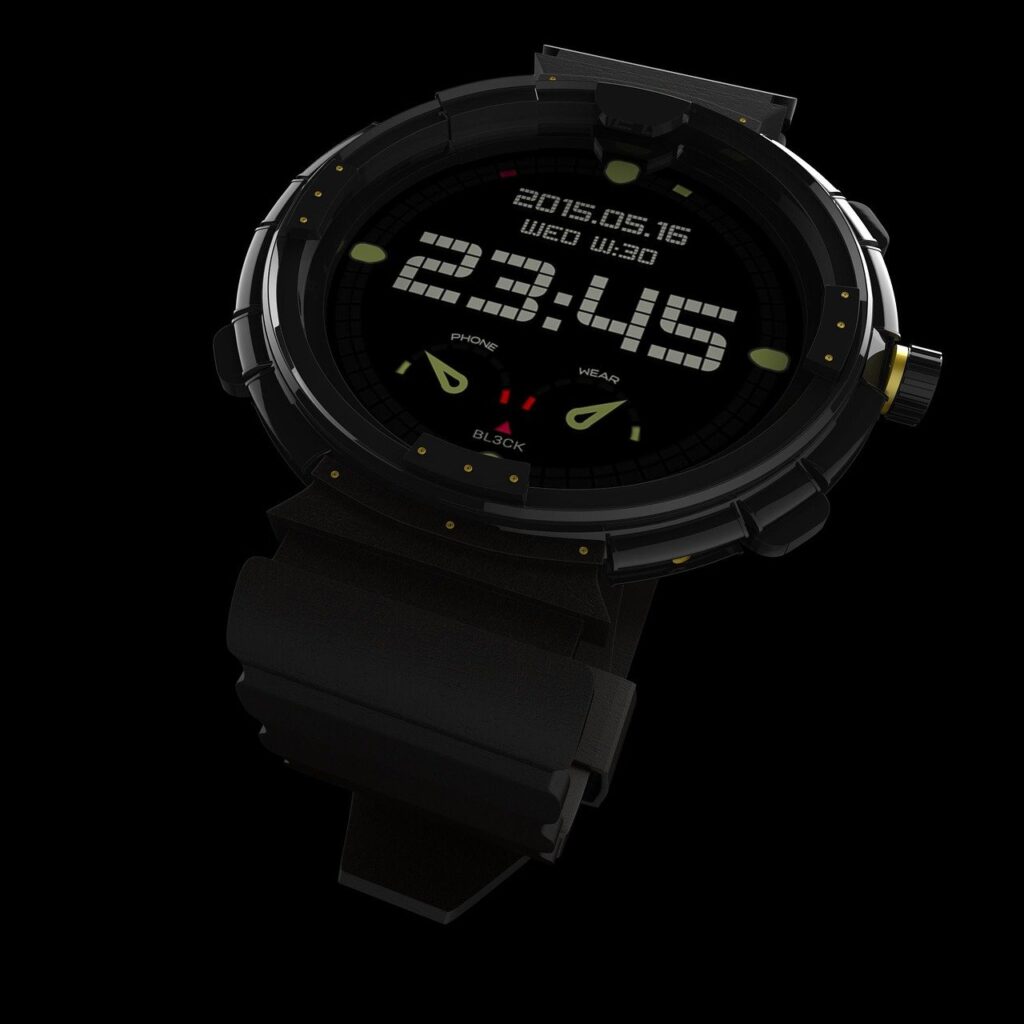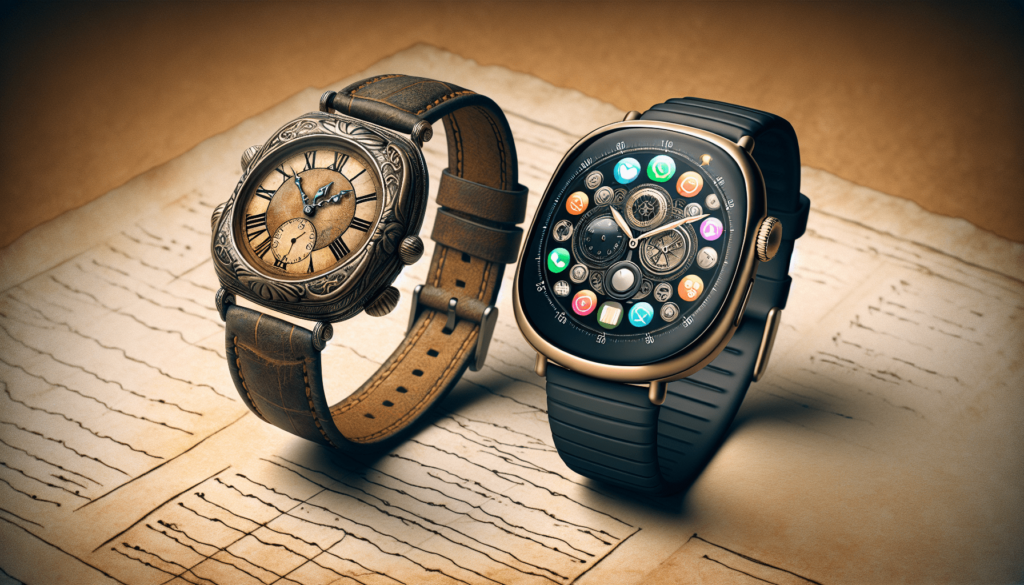In today’s technology-driven world, the rise of smartwatches has captured the attention of many. With their sleek designs, advanced features, and seamless integration with smartphones, these devices have quickly become a popular choice among tech-savvy individuals. But what does this mean for the traditional men’s wrist watch? Are smartwatches gradually taking over and rendering them obsolete? In this article, we will explore this ongoing debate and shed light on the future of timekeeping on your wrist.

The Evolution of Watches
Watches have come a long way since their inception, with significant advancements and changes in technology. From the earliest mechanical watches to the sleek and hi-tech smartwatches of today, the evolution of watches is a fascinating journey.
Mechanical Watches
Mechanical watches, which were the earliest forms of timekeeping devices, relied on intricate mechanisms to keep time accurately. These watches were powered by a mainspring, which needed to be manually wound regularly. The craftsmanship and precision required to create these intricate mechanisms were remarkable and set the foundation for the watch industry’s future innovations.
Quartz Watches
The introduction of quartz watches in the 1970s completely revolutionized the watch industry. Unlike mechanical watches, quartz watches relied on quartz crystals to keep time. This breakthrough technology allowed for more accurate timekeeping at a lower cost. Quartz watches quickly gained popularity due to their affordability and precision compared to their mechanically-powered counterparts.
Introduction to Smartwatches
With the rapid advancement of technology in recent years, smartwatches have emerged as the latest innovation in the world of timekeeping devices.
Definition of Smartwatches
Smartwatches can be defined as wearable devices that combine the functionality of a traditional watch with the features of a smartphone. These devices provide users with the ability to receive notifications, monitor their fitness, and even perform tasks such as making calls and sending messages – all conveniently strapped to their wrists.
Features of Smartwatches
Smartwatches come equipped with a range of features that make them highly appealing to tech enthusiasts. They often have touchscreens, allowing for easy navigation and interaction. Many smartwatches also include activity tracking capabilities, heart rate monitoring, GPS, and even the ability to stream music. The integration of voice assistants, like Siri or Google Assistant, further enhances the functionality and convenience of these devices.

The Advantages of Smartwatches
The rise of smartwatches can be attributed to their numerous advantages over traditional wrist watches. Let’s explore some of these advantages:
Multi-functionality
The most significant advantage of smartwatches is their multi-functionality. In addition to telling time, these devices can perform several tasks. Whether it’s checking emails, receiving notifications, or tracking your fitness goals, smartwatches serve as a miniature extension of your smartphone, offering a wide range of capabilities right on your wrist.
Notifications and Alerts
Smartwatches allow for quick and convenient access to notifications and alerts. Rather than constantly checking your phone, you can glance at your wrist to see if any important messages, emails, or calls require your attention. This feature is particularly useful during meetings, workouts, or other situations where reaching for your phone may be inconvenient or impractical.
Fitness Tracking
Another advantage of smartwatches is their ability to track and monitor fitness activities. These devices can count steps, measure heart rate, track sleep patterns, and provide valuable insights into one’s overall health and well-being. Fitness enthusiasts find this feature extremely beneficial, as it allows them to monitor their progress and adjust their routines accordingly.
The Appeal of Traditional Wrist Watches
While smartwatches offer numerous advantages, many individuals still find traditional wrist watches appealing and prefer to own them. Let’s explore the factors that contribute to the continued popularity of traditional watches:
Timeless Design and Craftsmanship
Traditional wrist watches are known for their timeless design and craftsmanship. These watches often feature intricate detailing, high-quality materials, and mechanical movements that showcase the skill and artistry of watchmakers. The aesthetic appeal of traditional watches is hard to match, and many watch enthusiasts appreciate the sense of heritage and legacy associated with them.
Status Symbol
Traditional wrist watches have long been considered status symbols. They are often associated with luxury brands and are valued for their exclusivity and craftsmanship. Wearing a prestigious watch can convey a sense of taste, sophistication, and success. For many, owning a traditional wrist watch is a symbol of achievement and social status.
Collectibility
Traditional watches have a unique appeal in the world of collecting. Vintage and limited-edition timepieces hold significant value and can appreciate in worth over time. The notion of collecting watches as a hobby has attracted enthusiasts who appreciate the historical significance and rarity of certain models. The allure of building a watch collection appeals to those seeking to own unique pieces of horological art.

The Rise of Smartwatches
Smartwatches have gained immense popularity in recent years, due in large part to several key factors:
Technological Advancements
The continuous advancements in technology have played a vital role in the rise of smartwatches. As technology becomes more sophisticated and miniaturized, smartwatch manufacturers have been able to pack a remarkable amount of functionality into these compact devices. Improved processors, longer battery life, and enhanced connectivity have made smartwatches more practical and appealing to a wider range of consumers.
Integration with Mobile Devices
The seamless integration between smartwatches and mobile devices has been a crucial factor in their rising popularity. By pairing a smartwatch with a smartphone, users can access a variety of features and functions directly from their wrist. Whether it’s receiving calls, reading messages, or controlling music playback, the ability to interact with your phone without physically holding it has greatly enhanced the user experience.
Increased Accessibility
Smartwatches are now more accessible than ever before. With a wide range of brands and price points available, consumers have the freedom to choose a smartwatch that fits their budget and preferences. This accessibility has allowed a broader demographic to embrace and adopt smartwatches as a part of their daily lives.
Factors Influencing the Replacement of Traditional Watches
While traditional watches still retain their appeal, there are certain factors influencing their gradual replacement by smartwatches:
Changing Lifestyle and Needs
As our lifestyles become increasingly fast-paced and interconnected, the need for quick and convenient access to information becomes more pronounced. Smartwatches offer instant connectivity and easy accessibility, catering to the demands of modern life. Quick access to notifications, emails, and fitness tracking aligns with the needs of individuals who require efficient multitasking capabilities.
Growth of the Tech Industry
The rapid growth of the tech industry has had a significant impact on the replacement of traditional watches. With major tech companies investing heavily in the development of smartwatches, these devices have evolved from being mere gadgets to sophisticated and reliable companions. The continuous innovation and introduction of new features in smartwatches make them appealing to early adopters and tech enthusiasts alike.
Youth and Tech-savvy Generations
The younger generations, who have grown up in a digital era, are naturally inclined towards technology-driven products. Smartwatches resonate with this tech-savvy demographic, as they encompass the latest advancements and offer features that align with their digital lifestyles. The convenience, connectivity, and trendy appeal of smartwatches make them particularly attractive to younger consumers, who may prioritize functionality over traditional aesthetics.

The Role of Fashion and Style
While functionality and technology are important considerations in choosing a watch, fashion and style also play a significant role in the preferences of consumers.
Fashion-forward Designs
Smartwatches have made great strides in the realm of fashionable design. Manufacturers have recognized the importance of creating sleek, stylish, and customizable smartwatches that appeal to a wide range of tastes. The availability of various watch faces, interchangeable straps, and materials allows users to personalize their smartwatches to suit their personal style or outfit.
Customization Options
The ability to customize smartwatches is a major advantage over traditional watches. Users can choose from a vast array of watch faces, themes, and even create custom notifications to enhance their smartwatch experience. Being able to tailor the appearance and functionality of a watch to one’s preferences adds a personal touch and sense of ownership that traditional watches often lack.
The Impact on the Watch Industry
The rise of smartwatches has undoubtedly made a significant impact on the watch industry as a whole.
Shift in Consumer Preferences
Consumer preferences have shifted towards smartwatches, resulting in a decline in traditional watch sales. This shift has prompted traditional watch manufacturers to adapt and incorporate technology into their offerings to remain competitive. While some watch enthusiasts remain loyal to traditional wrist watches, the growing market for smartwatches cannot be ignored.
Adaptation and Competition
Many traditional watch brands have embraced the smartwatch trend by introducing their own versions of connected timepieces. This adaptation allows watch manufacturers to cater to the evolving preferences of consumers while still maintaining their brand identity and craftsmanship. By combining the charm of traditional watch design with smart features, these brands aim to stay relevant in an increasingly digital world.

The Future of Traditional Wrist Watches
Although smartwatches have gained significant popularity, traditional wrist watches will likely always maintain a place in the market.
Niche Market and Luxury Brands
Traditional wrist watches, particularly those from luxury brands, will continue to appeal to a niche market. These timepieces offer a level of exclusivity, craftsmanship, and aesthetic appeal that cannot be replicated by smartwatches. Watch enthusiasts and collectors value the heritage and prestige associated with luxury watches and will continue to seek them out as valuable investments and unique fashion statements.
Potential for Innovation
The continued popularity of traditional wrist watches relies on the industry’s ability to innovate. The integration of new materials, advanced mechanical movements, and complication features can keep traditional watches relevant and appealing. Embracing cutting-edge technology, such as hybrid watches that combine smart features with traditional design, presents an opportunity to bridge the gap between the two worlds and appeal to a broader market.
Conclusion
In the fast-paced world of technology, smartwatches have emerged as formidable contenders for the wrists previously adorned by traditional watches. While smartwatches offer a range of features and functionality that cater to modern lifestyles, traditional wrist watches maintain their allure through timeless design, craftsmanship, and status symbolism. The coexistence of smartwatches and traditional watches is a testament to personal preference, with each offering unique benefits and appeals. Whether you choose a smartwatch for its versatility or a traditional watch for its elegance, the choice ultimately lies in your hands – or rather, on your wrist.

